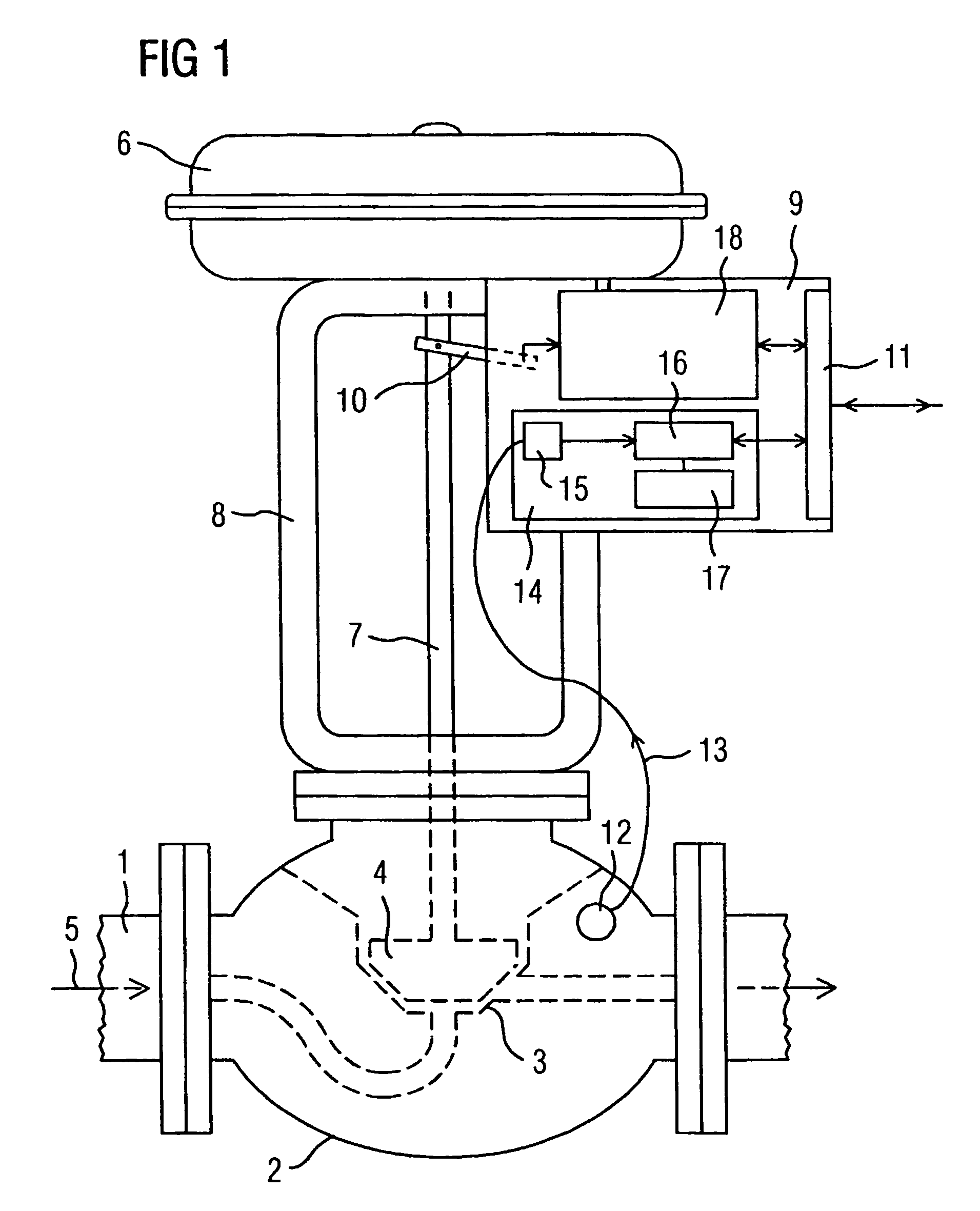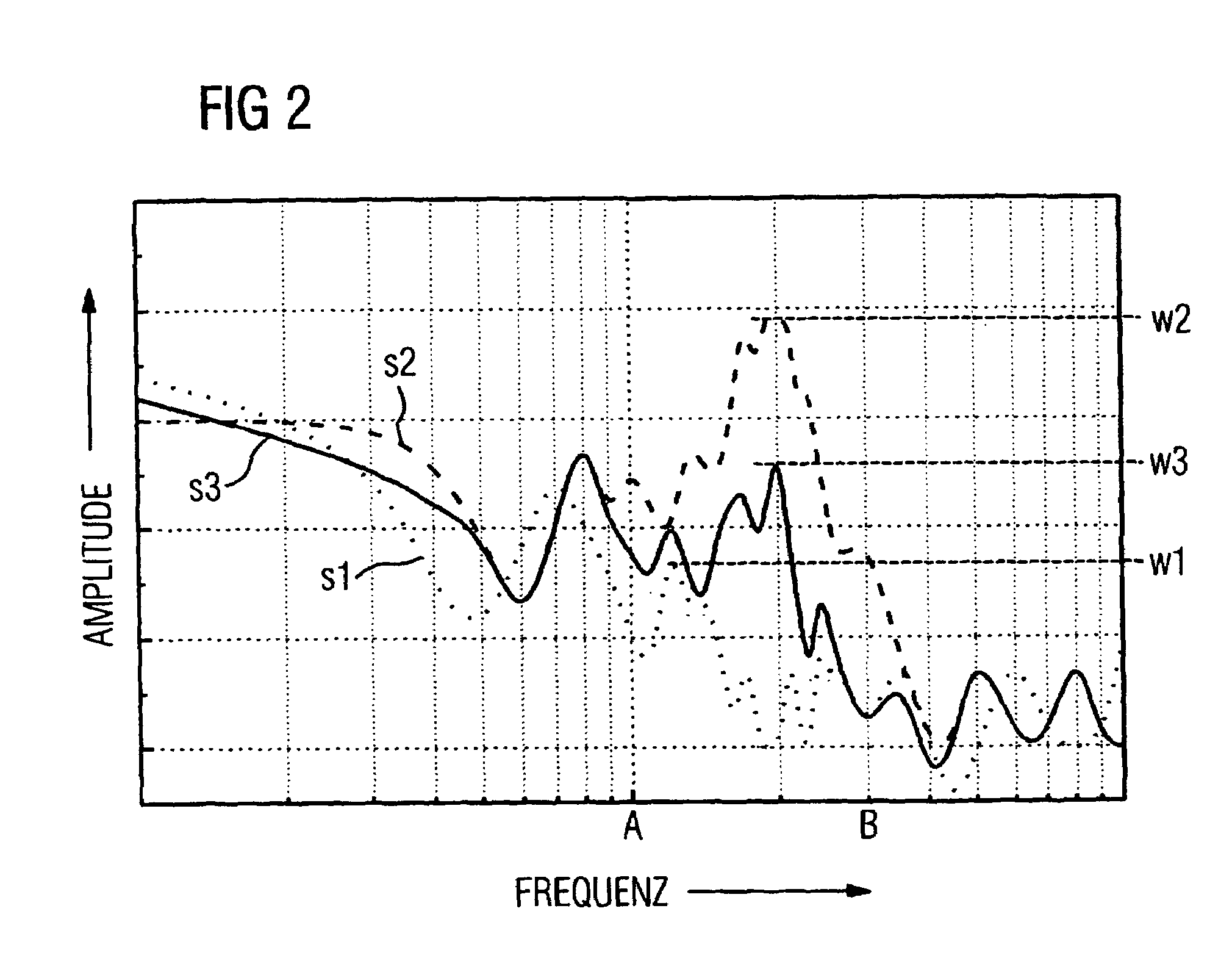Diagnostic system and method for a valve
a technology of diagnostic system and valve, applied in the direction of service pipe system, fluid tightness measurement, instruments, etc., can solve the problems of broadband noise and leakage flow, and achieve the effect of low complexity of the calibration process and increased reliability of the diagnostic statemen
- Summary
- Abstract
- Description
- Claims
- Application Information
AI Technical Summary
Benefits of technology
Problems solved by technology
Method used
Image
Examples
Embodiment Construction
[0033]According to FIG. 1, a valve 2 is installed in a pipeline 1 of a process plant (not depicted). The valve 2 controls the flow of a medium 5 by a corresponding stroke of a closing member 4 interacting with a valve seat 3. The stroke is produced by a drive 6, for example a pneumatic drive, and is transmitted to the closing member 4 via a valve rod 7. The drive 6 is connected to the valve housing via a yoke 8. A positioner 9 with a control unit 18 is mounted to the yoke 8. The positioner 9 detects the stroke on the input side by way of a connecting element 10 that engages with the valve rod 7, compares the stroke with a setpoint value supplied via a data interface 11 of a field bus, and controls the drive 6 on the output side in terms of a correction of the control deviation. A sensor 12 for structure-borne noise is mounted to the housing of the valve 2. A signal 13 from the sensor 12 is supplied as a measurement signal to a device 14 for evaluating the measurement signal 13. In t...
PUM
 Login to View More
Login to View More Abstract
Description
Claims
Application Information
 Login to View More
Login to View More - R&D
- Intellectual Property
- Life Sciences
- Materials
- Tech Scout
- Unparalleled Data Quality
- Higher Quality Content
- 60% Fewer Hallucinations
Browse by: Latest US Patents, China's latest patents, Technical Efficacy Thesaurus, Application Domain, Technology Topic, Popular Technical Reports.
© 2025 PatSnap. All rights reserved.Legal|Privacy policy|Modern Slavery Act Transparency Statement|Sitemap|About US| Contact US: help@patsnap.com



